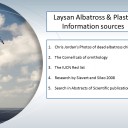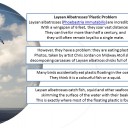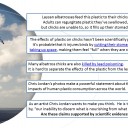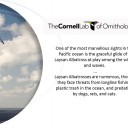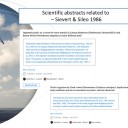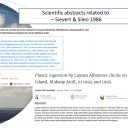Plastic debris
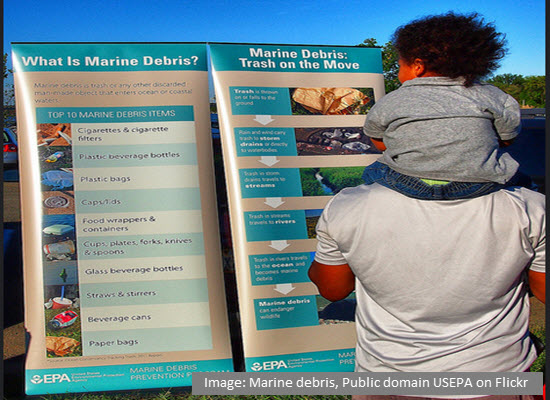 Students watch an short emotive presentation and video about the tragic death of Laysan albatross chicks on Midway Atoll in the north Pacific. They are given an opportunity to deconstruct this presentation and to think about it scientifically using critical thinking. A research activity follows leading to a data based IB style question about Laysan Albatross chicks and other species of seabirds.
Students watch an short emotive presentation and video about the tragic death of Laysan albatross chicks on Midway Atoll in the north Pacific. They are given an opportunity to deconstruct this presentation and to think about it scientifically using critical thinking. A research activity follows leading to a data based IB style question about Laysan Albatross chicks and other species of seabirds.
Lesson Description
Guiding Question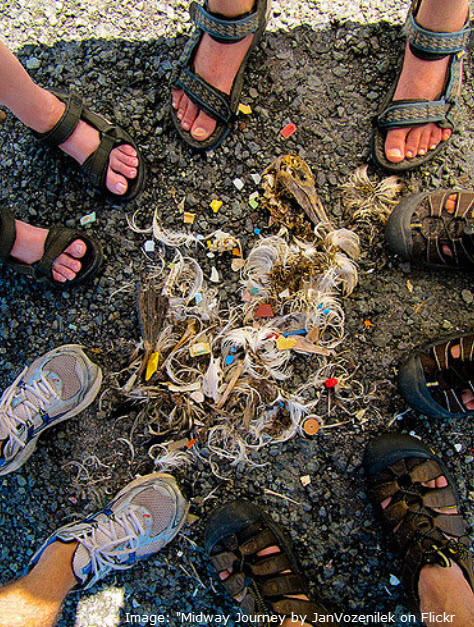 s
s
"If you want to see the Pacific garbage patch go to midway island and look in the stomachs of dead baby albatrosses", Chris Jordan, 2012
- How can we be sure that macroplastic and microplastic debris has accumulated in marine environments.
- What is the impact of marine plastic debris on Laysan albatrosses and one other named species?
Activity 1 - Critical thinking about Leysan albatross chicks on Midway Atol ?
"The problem of the great pacific garbage patch is a reflection of our own inability to descern what is nourishing from what is toxic." Chris Jordan, 2010
Watch the short videos and answer the questions which follow.
Answer the questions on this ![]() critical thinking worksheet - Midway Albatross.
critical thinking worksheet - Midway Albatross.
Activity 2 - Researching as a biologist
Carry out this critical thiking task. As a biologist would, find out more information to support or falsify the case made about the damaging effects of plastic on Laysan albatross chicks on Midway Atoll.
These slides make a good starting point.
These links will help research too.
Activity 3 - Past paper question
Answer the following data based questions. ![]() IB style questions on seabird ingestion of plastic
IB style questions on seabird ingestion of plastic
Teacher's notes
This activity could be a very quick presentation or a homework activity. It helps students to learn a little about plastic and the Great Pacific garbage patch and it's affect on seabirds.
There are model answers to the IBstyle questions here: Plastic - IBstyle question model answers.
There is also an element of critical thinking, especially in the first activity where an artist, Chris Jordan, makes an emotional appeal for us to think about our use of plastic using images of dead chicks. He is an interesting artist who creates art from rubbish.
The focus of this activity is really ingestion of plastic by seabirds, Laysan albatross in particular, but this lesson could lead to a CAS activity and there is more information about plastic on this video. ![]() CNN documentary about what really happens to plastic you throw away.
CNN documentary about what really happens to plastic you throw away.

 IB Docs (2) Team
IB Docs (2) Team

